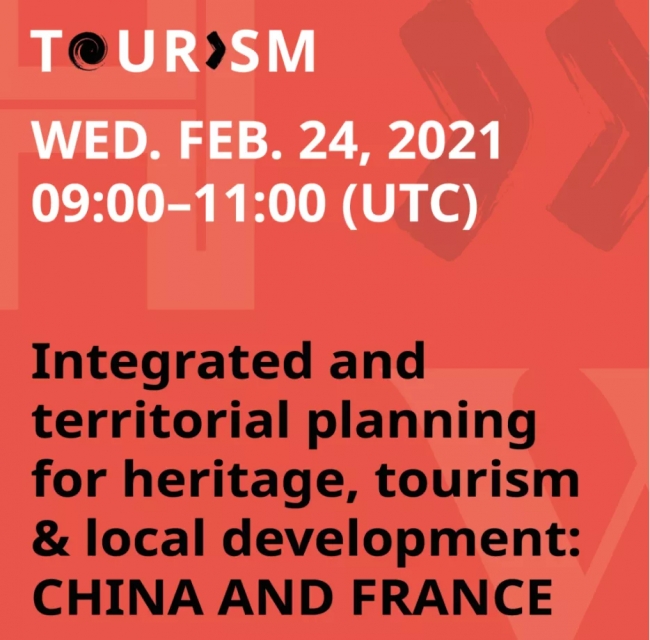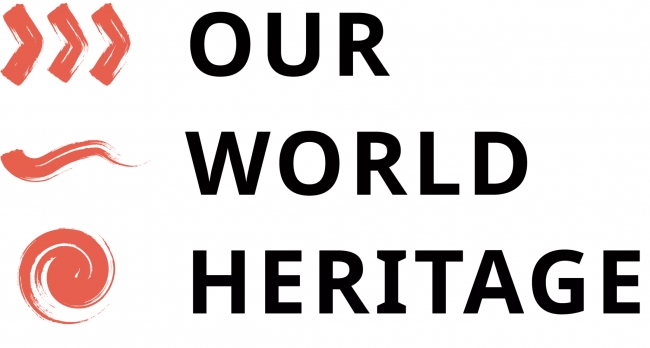| Meeting Preview:Tourism, Heritage and Integrated Approach, Case Studies in China and France |
| PublishDate:2021-02-22 Hits:1790 |
February 24, 2021,10:00-12:00 am Paris time (5:00-7:00 pm Beijing time) on ZOOM
Languages: Chinese / English / French Organizer:THE OURWORLDHERITAGE INITIATIVE Organised with: Observatoire de l’architecture de la Chine contemporaine In partnership with: Association des Petites Cites de Caractère and Tongji University
REGISTRATIONS: https://www.ourworldheritage.org/t_events/
Introduction
In China, the 14th Five-Year Plan (2021-2025) will focus on the domestic market, including heritage and tourism, both of which have been factors of development for more than two decades. The problems encountered with regard to the endangerment of heritage, landscapes and populations on over-exploited or poorly exploited sites are now shared by China and Western countries alike. In France as in China, integrated approaches have been carried out in an attempt to combine and produce new urban management tools that combine cultural, natural and intangible heritage, tourism and environmental quality in a territorial vision that involves villages, towns and cities. The inhabitants are involved upstream of these experimental processes. The purpose of the case studies presented will be to identify the strengths and weaknesses of the achievements carried out, so as to help the dissemination of good practices and contribute to the elaboration of specific recommendations, targeted by type of actors or context.
Speakers: Roger Bataille, Mayor of Ervy-le-Chatel, Vice-president of the Association “Petites Cités de Caractère” Alain Marinos, national delegate of the Association “Petites Cités de Caractère” Pr SHAO Yong, Tongji University, Shanghai Pr ZHANG Chunyan et Mrs HU Lian, Tianjin University Pr ZHOU Jian, WHITRAP, Shanghai
Moderators: Françoise Ged, Observatoire de la Chine, Cité de l’architecture & du patrimoine, INALCO Minja Yang, RLICC/KUL Emeritus & ex-Unesco
Rapporteur: Mrs PENG Liang, landscape designer
Programs:
INTRODUCTIONS – Minja YANG and Françoise GED
1. CHINESE CASE STUDIES:
Q&A session
2. FRENCH CASE STUDIES:
Q&A session
INFORMATIONS : maria.gravari-barbas@wanadoo.fr https://www.facebook.com/OurWorldHeritageTourism
DOWNLOAD DETAILED INFORMATION:https://www.ourworldheritage.org/wp-content/uploads/2021/02/programme_24_fev_ang-1.pdf
Organizer Introduction
THE OURWORLDHERITAGE INITIATIVE
POSITION STATEMENT
The World Heritage Convention is at risk
World Heritage has for some 50 years served as a beacon of hope, protecting the wonders of our world for future generations. It was created with great foresight at the dawn of the modern conservation era.Today however, this unifying instrument is straining under its success. With over 1,100 protected sites, conservation has taken second place to list-making. Properties and associated resources continue to deteriorate while global threats rise and politics override protection.
Civil society should play a bigger role in the implementation of the Convention
Civil society has so far played a minor role, both locally and globally, in the implementation of the World Heritage Convention. Unlike other cultural and natural heritage protection treaties, the Convention has limited the participation of civil society organizations, reducing the effectiveness of heritage protection policies.
Redefining the role of heritage in a multidimensional world
The World Heritage Convention needs to adapt to a multidimensional and multicultural world, by protecting heritage that reflects the diversity of societies and their needs, by fully respecting human rights and by embracing modern technology to foster transparency and participation.
OUR MISSION
OurWorldHeritage raises general awareness about the opportunities and threats that natural and cultural World Heritage sites encounter in the 21st century, precipitated by, among others, increasing development pressures, industrial and mining operations, climate change, unsustainable tourism and conflicts. The systematic involvement of civil society is elementary in finding sustainable solutions.OurWorldHeritage will also be calling on the responsibilities of States Parties as well as of public and private actors to respect the spirit of the World Heritage Convention and stop politicization. OurWorldHeritage promotes gender, regional and age balance in its activities and intends to foster the role of youth in all aspects of heritage management, as a way to promote the awareness of future generations on the importance of cultural and natural heritage for society and to ensure its long-term conservation.OurWorldHeritage intends to reach this objectives through:
https://www.ourworldheritage.org/
— END —
Editor:Chen Huan、Xu Kanda
|
- Documentary: 2023 World Heritage Creative X Innovators Conference and the AWHEIC Third Anniversary Celebration
- Publication | WHITRAP Newsletter No. 61
- Mt. Huangshan first show in Climate Action for World Heritage
- Call for Good Practices: 2024 Environment and Resilience
- FAQs | 2024 Call for Good Practices
- Operational Guidelines for the Implementation of the World Heritage Convention 2017
Copyright © 2009-2012 World Heritage Institute of Training and Research-Asia and Pacific (shanghai)







